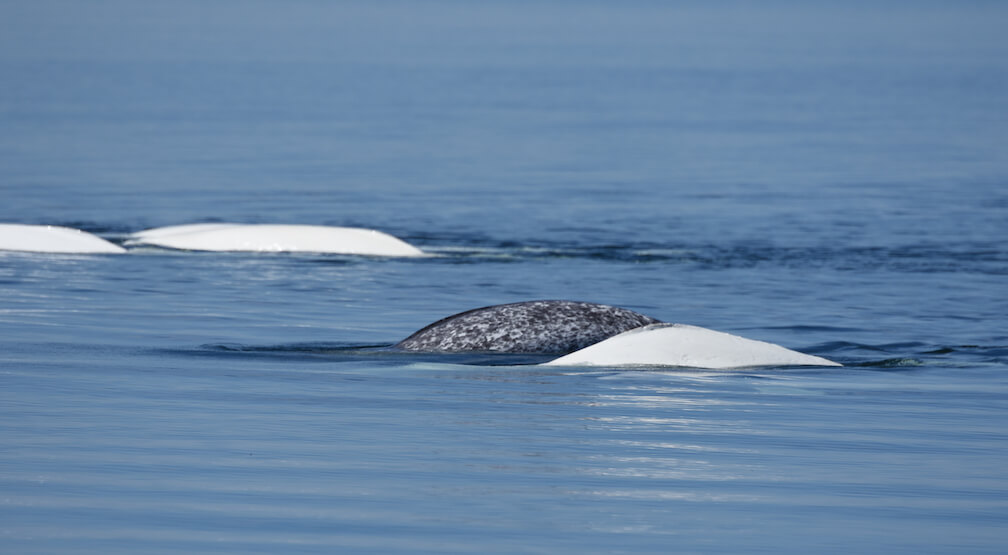By Mathieu Marzelière and Albert Michaud
A new season is getting underway aboard GREMM’s Zodiac, the BpJAM. New season, new team! This year, the crew is composed of two research assistants returning for their second consecutive season. After finishing a technical field work program as part of his college studies, Mathieu joined the GREMM in 2017 to participate in tracking large rorquals, after which he would go on to complete several missions as Marine Mammal Observer (MMO). As for Albert, he recently completed a Bachelor’s degree in biology at Université Laval after participating in an exchange program his senior year on the island of Svalbard in the Norwegian High Arctic.
Our main mission this year is beluga photo-identification. We must ensure the continuation of the annual St. Lawrence beluga census, which was first initiated over 30 years ago! The objectives of this project are manifold, but it notably offers researchers insight into the complex social relationships of St. Lawrence belugas. It’s a bit like a beluga Facebook.
In addition to continuing the photo-ID program, we also have a new project: aerial video recordings. Using a drone, the BpJAM team sets out to document a new facet of beluga life: their social interactions. Taken in a systematic manner, these videos offer a new glimpse of the daily lives of belugas under the surface, which was nearly impossible from aboard the boat. In particular, we want to better understand how and why belugas use a given habitat.
Thanks to this new tool, we were able to make a great discovery last Friday. After completing the classic photo-identification tracking of a group of about 50 to 60 belugas, we launch the drone. After a few minutes in the air, a group of belugas resurfaces. And to our surprise, the narwhal is amongst them! After the initial excitement of this discovery, our first question was: is this the same individual as the one observed in 2016 and 2017? We therefore landed the drone and took out our camera to take a few snapshopts. After photographing our vagrant as well as his companions from both sides, we were able to confirm that it was indeed the same narwhal!
The drone sequences that we collected showed a narwhal that seems to be at home with the St. Lawrence belugas. We observe it in a group of about ten young males in the midst of socializing. Due to the climate change being observed in the Arctic, there is a chance that these two related species (the beluga and narwhal belong to the same family: Monodontidae) might find themselves in one another’s company more and more frequently in the decades to come. We already see this phenomenon in other species such as the polar bear and the grizzly, which have even been observed to interbreed. Might we someday observe a narwhal-beluga hybrid in the St. Lawrence?
The story in the media (a short selection)
Beluga whales adopt lost narwhal in St. Lawrence River (CBC, 13/09/2018)
Belugas Adopt a Stray Narwhal (AJ+, 15/09/2018)
Au Canada, un narval solitaire s’est vu adopter par un groupe de bélugas (MaxiSciences, 13/09/2018)






